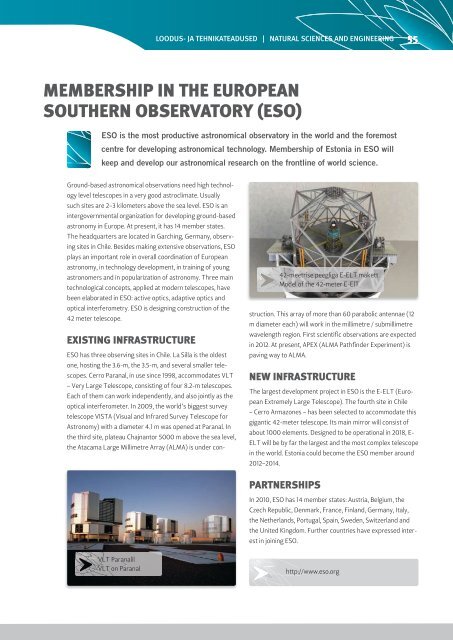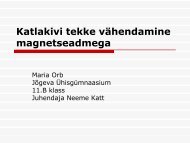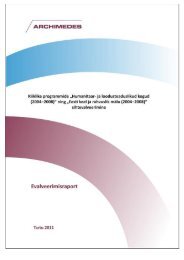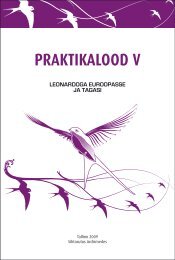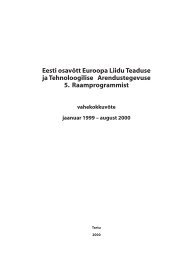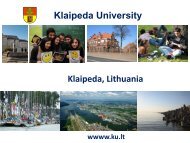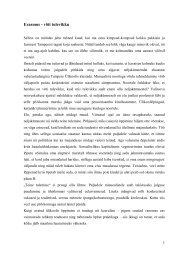Eesti teaduse infrastruktuuride teekaart - ETIS
Eesti teaduse infrastruktuuride teekaart - ETIS
Eesti teaduse infrastruktuuride teekaart - ETIS
- No tags were found...
You also want an ePaper? Increase the reach of your titles
YUMPU automatically turns print PDFs into web optimized ePapers that Google loves.
LOODUS- JA TEHNIKATEADUSED | NATURAL SCIENCES AND ENGINEERING 55MEMBERSHIP IN THE EUROPEANSOUTHERN OBSERVATORY (ESO)ESO is the most productive astronomical observatory in the world and the foremostcentre for developing astronomical technology. Membership of Estonia in ESO willkeep and develop our astronomical research on the frontline of world science.Ground-based astronomical observations need high technologylevel telescopes in a very good astroclimate. Usuallysuch sites are 2–3 kilometers above the sea level. ESO is anintergovernmental organization for developing ground-basedastronomy in Europe. At present, it has 14 member states.The headquarters are located in Garching, Germany, observingsites in Chile. Besides making extensive observations, ESOplays an important role in overall coordination of Europeanastronomy, in technology development, in training of youngastronomers and in popularization of astronomy. Three maintechnological concepts, applied at modern telescopes, havebeen elaborated in ESO: active optics, adaptive optics andoptical interferometry. ESO is designing construction of the42 meter telescope.EXISTING INFRASTRUCTURE42-meetrise peegliga E-ELT makettModel of the 42-meter E-ElTESO has three observing sites in Chile. La Silla is the oldestone, hosting the 3.6-m, the 3.5-m, and several smaller telescopes.Cerro Paranal, in use since 1998, accommodates VLT– Very Large Telescope, consisting of four 8.2-m telescopes.Each of them can work independently, and also jointly as theoptical interferometer. In 2009, the world’s biggest surveytelescope VISTA (Visual and Infrared Survey Telescope forAstronomy) with a diameter 4.1 m was opened at Paranal. Inthe third site, plateau Chajnantor 5000 m above the sea level,the Atacama Large Millimetre Array (ALMA) is under construction.This array of more than 60 parabolic antennae (12m diameter each) will work in the millimetre / submillimetrewavelength region. First scientific observations are expectedin 2012. At present, APEX (ALMA Pathfinder Experiment) ispaving way to ALMA.NEW INFRASTRUCTUREThe largest development project in ESO is the E-ELT (EuropeanExtremely Large Telescope). The fourth site in Chile– Cerro Armazones – has been selected to accommodate thisgigantic 42-meter telescope. Its main mirror will consist ofabout 1000 elements. Designed to be operational in 2018, E-ELT will be by far the largest and the most complex telescopein the world. Estonia could become the ESO member around2012–2014.PARTNERSHIPSIn 2010, ESO has 14 member states: Austria, Belgium, theCzech Republic, Denmark, France, Finland, Germany, Italy,the Netherlands, Portugal, Spain, Sweden, Switzerland andthe United Kingdom. Further countries have expressed interestin joining ESO.VLT ParanalilVLT on Paranalhttp://www.eso.org


